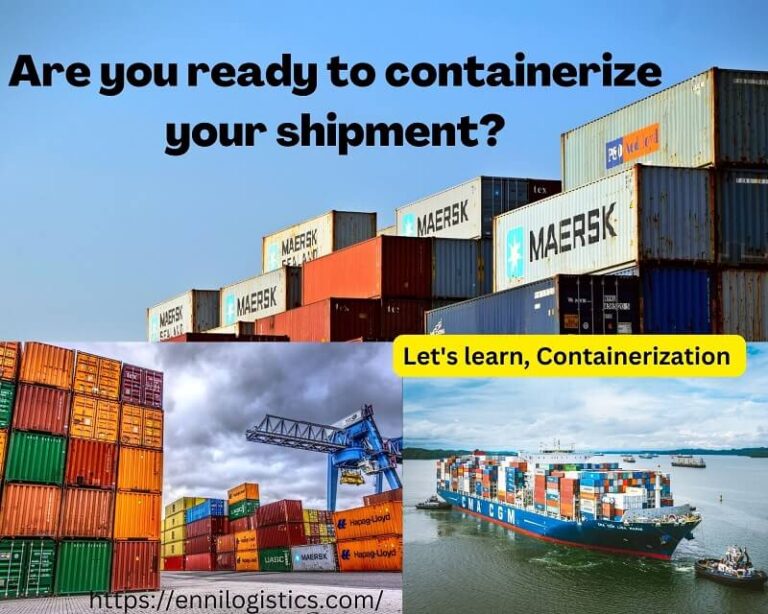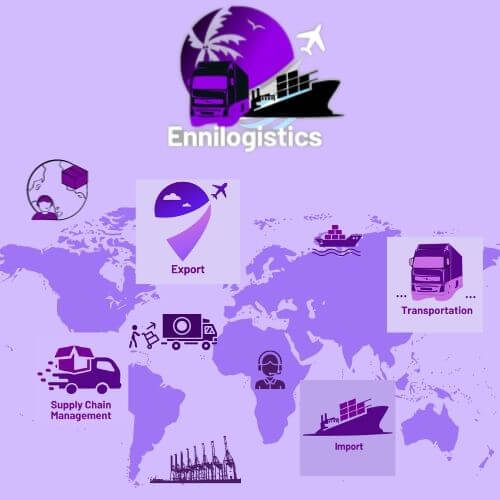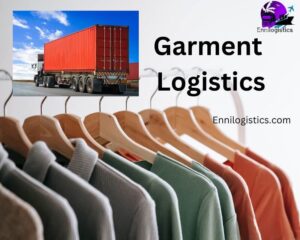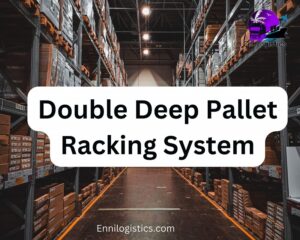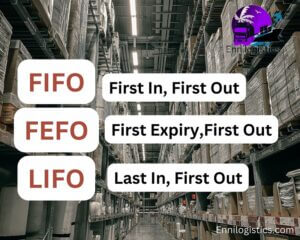Shipment packaging is the main part of the shipping. Cargo containerization is a standard method of shipment packing. In this blog, we are going to describe valuable details of cargo containerization including standard container types, advantages and disadvantages of cargo containerization, and more.
What is the meaning of cargo containerization?
The simple meaning of containerization is goods loaded into containers for the purpose of transport.
Next, we will discuss advantages of the cargo containerization. please see the below list.
Advantages of cargo containerization
The below list mentions the general advantages of cargo containerization.
- Containerization is protecting the cargo packages separately.
- Risk reduction in cargo pilferage and theft
- Cargo damaging risk can be reduced
- Packing requirements also reduce with containerization
- Cargo insurance cost is reduced. which means cargo claim liability is low when securing the shipment.
- Containerization is encouraging door-to-door transport-it means containers can use more modes of transportation easily.
- Easy handling method for loading and unloading a container
- Easy handling is time reduction in the port
- Labor requirement is low to handle so cost saving
- Easy-to-use multimodal transportation
- Just-in-time delivery (JIT)with containerization
- Inventory requirement is low which means low cost due to low transit time
- Creating a lot of business opportunities. Such as Freight forwarding, adding value to port, CFS (Container freight stations)
- Prevention of cargo contamination
Cargo containerization is a standard method of packaging cargo. Containerization advantages can be divided into 3 separate sectors. They are Ship users, ship owners, and freight forwarders.
Cargo Containerization advantages – for ship owners
If are you a ship owner you also have more benefits from cargo containerization. Below list of mentioning the advantages of containerization on the shipowner’s side.
1. Reduce time consumption in the port because of less ship turn round time.
It is a considerable factor for shipowners. Time is the money. So faster handling of containers means reduced time in the ports. Most of the ports are having modern equipment for container handling so there is quicker handling than normal cargo handling. With the containerization of goods, shipowners can make benefit from time-saving.
2. Optimal level of utilization of ship capacity.
3. Cargo claims liability is reduced with containerization
Cargo damages and contamination, loss, or pilferages are at a minimum level with containerization. So, claim liability is decreased then automatically benefits to shipowner due to the cost reduction of claims.
4. Transshipment facility is high
Containerized Cargo transshipment is easy than others. So, it is providing convenience for the transshipments of cargo. It is advantageous for making a profit for the shipping companies.
Cargo Containerization Advantages – for ship users
1. There is high protection for containerized cargo
It is preventing cargo damage, pilferage, and contamination of the cargo.
2. Packaging cost is less.
Cost saving for packaging. If you need to transport more items you can pack in a container all goods without separate packaging for each and every item.
3. Reduce Inland transport and handling charges
4. Door to Door transportation is easy with fast-moving of goods.
5. Better controlling of inventory level
Inventory level requirement is low due to lower transit time. It means there is better inventory control.
Cargo Containerization advantages – for freight forwarders
Freight forwarders are the intermediary party of the importers and exporters when transporting goods from one place to another place.
1. There is a facility to service proving cargo consolidation.
2. Door-to-door service providing
3. Distribution services
Disadvantages of cargo containerization
- Capital cost is high for container ships, containers, and post infrastructure for handling containers
- All commercial goods cannot be containerized
- High transportation cost With the imbalance of export and import a country. if some country has imported more than export. It will create an empty container and return vice versa.
What are ISO standard sizes of containers?
ISO standard containers used for intermodal cargo transportation. With this standard can be easy to load and seal, and track easily.
This can be helping to loaded, and sealed containers to ship from truck or rail. As well as after the unloading container from the ship easy to handle with standardized port equipment and tools. They can be delivered to the last-mile delivery destination by truck or rail.
Cargo planes, and semi-trailers trucks there is an improvement in port handling efficiency due to containerization. There are many sizes of containers introduced by the ISO 20ft, 40ft, 45ft, 48ft, and 53ft foot available.
When using the standard-size container, it is easy to transport between two or more modes of transportation. As well as easy to handle in the ports and terminals and also can get the advantage of space utilization at an optimum level.
Container capacity is measured as TEU (Twenty Foot Equivalent units)
What is TEU? (Twenty Foot Equivalent units)
Container capacity is measured in TEU.
How to select the right type of container for your shipment?
When you are selecting a container, you have to think about below things,
- Shipment size and the weight
- Nature of the cargo
- Type of the cranes and spreader needed for handling purpose
- Standardization of the cargo
What types of Containers are available?
There are many types of cargo containers. In this section, we are going to explain the main types of containers.
1. Dry Storage container
Most of the time commonly used container type is a dry storage container. Use for transporting dry materials. This type has standardized lengths as below,20ft,40ft,10ft in length, and each at 8 feet around.
Examples of cargo use in dry storage container-electronic items
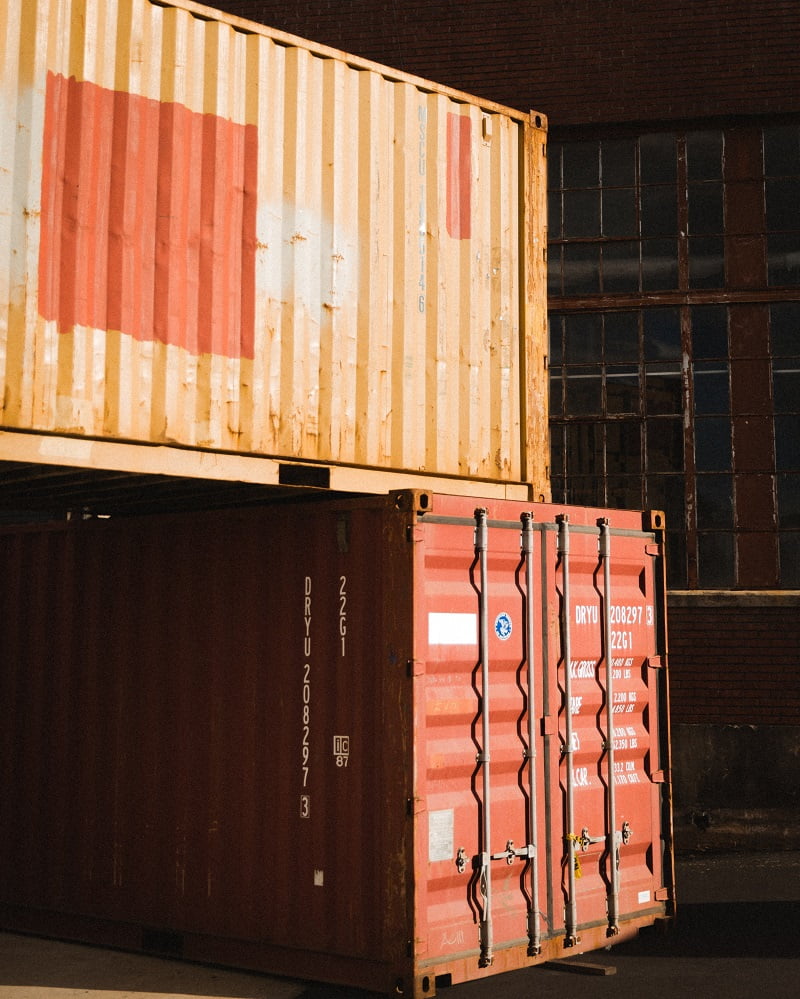
2. Flat rack Container
The flat rack container has collapsible sides. These sides can fold to make a flat rack hanging a large variety of goods.
Example-Clothes haggling on a rack
3. Open-door container
In this type of container, the door is intentionally open. Due to getting ventilation. use for ventilation required cargoes. Such as onion, potatoes, garlic
4. Open the top container
In this container, the top can be removed, and make the top is open. Commonly use this for shipping more height cargoes.
5. Tunnel container
There are 2 doors at the ends of the container. This is an easy-to-be loading and unloading process of cargo.
6. Open-side storage container
This type of container has doors that can be open sides. It provides wider room for loading and unloading cargo.
7. Double doors container
There are 2 doors to help to load and unload cargo. This is mostly used for shipping construction materials.
For example; steel, and iron are less than or equal to container size.
8. Refrigerated ISO containers
Also known as a reefer container. This kind of storage container has the facility to control temperature regularly. It is used for shipments of perishable items.
Example: fruits, vegetables
9. Thermal or insulated containers
This type of container has a regulated temperature-controlling facility. Commonly used for high temperatures.
Example goods:
The thermal container’s material requirement is not damaged or constant exposure to high temperatures. This container is best for long-distance traveling shipments.
10. Tanks
Use for transporting liquid cargo. For keeping a long life the tanks are made from strong steel or other anti-corrosive materials while providing protection for the stored item.
11. Drums
Simply understand by name of the container. It looks like drums that are made from steel and lightweight materials and plastics and fiber. use for the bulk of liquid materials. it any small but space utilization is high due to the shape of the container.
12. Car carriers
Car carriers type of containers is made for transport long distance. As the name of this container, this container transport vehicle. Those are designed with collapsible sides to reduce damages for a vehicle that is carrying.
13. Haft height
As the name of this container type has haft height of a normal container. These are made from steel.
Cargo type of transport-coal, stones
14. Intermediate bulk containers
This kind of container unit is made for intermediate shipping purposes. Designed for handling large amounts of materials transporting for the purpose of further packing and sending to the destination.
What is FCL?
FCL Stands for Full Container Load. This means cargo is fully loaded in the container which has owned by one shipper. When Space booking an FCL means the shipper has booked a fully loaded container.
Benefits of FCL Shipment?
- Reduce the risk of cargo damage or loss.
- quick transit time
- control entire shipment and guaranteed by shipping lines while showing a clear overview of the shipment.
What is LCL?
LCL stands for Less than a Container Load. Small sea mode shipments are called LCL. In this type of shipment, the shipper has not occupied full container capacity. But shippers use less than container capacity. This kind of container is also called a consolidated container.
Benefits of LCL?
- This is a cost-effective and flexible method of transporting small shipments.
- When you use LCL shipment you have to pay only for the space your cargo has occupied in the container.
- When you ship a small number of goods frequently, overhead and warehouse cost is less.
- Shipping Space booking is more speeder than FCL booking due to availability being high.
What is a Laden container?
A Laden container is cargo filled container.
What is an empty container?
Shipping without goods means empty containers. The imbalance between the country’s imports and exports. Mostly this happened when the country has more imports than export.
How do you select FCL or LCL for your shipment in ocean shipping?
For choosing an FCL or LCL consider the below factors,
- Type of the cargo-If cargo is likely to contaminate with other
- The volume of the shipment -Volume is higher than 10CBM better to select FCL. If a low volume of shipment is good for LCL.
- Cost -Space requirement when high you need to pay more. According to the number of goods you have to pay more in LCL. Firstly, you need to consider the volume of the shipment and need to calculate freight for LCL and FCL. Then you can select the most cost-effective way.
- Urgency-If it is a very urgent product. It is suitable for selecting the FCL method because may have delays when consolidating and distributing LCL shipments it needs additional time.
- Security-more secure shipping option is FCL than LCL. Because you face problems like loss, damage, or pilferage, contamination of cargo risk is high in LCL shipment.
You may like to Read
- Do You Know The Main Types Of Cargo?
- What Is The Importance Of Cargo Insurance In 2023?
- What Is Bonded Warehouse: Everything You Need To Know
- Bill Of Lading: Everything You Need To Know
- World Busiest 6 Transshipment Ports(Hubs) In The World 2023
- 7 Rights Of Logistics (7R S): For Learning Logistics Easily
- A More Powerful Place In Maritime Shipping: Port(Types, Facilities, Functions)
- How To Make Your Last-Mile Delivery Super Easy
- How To Start A 3PL (Third Party Logistics) Company?
- New Trend In Transportation And Logistics: Drone Logistics
- 15 Logistics And Supply Chain Management Degree Online 2023

